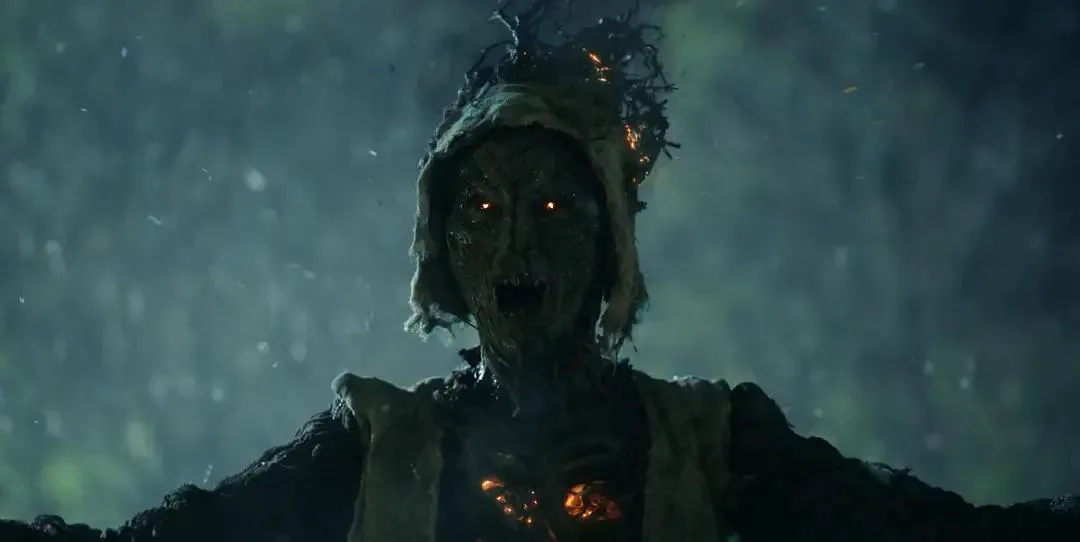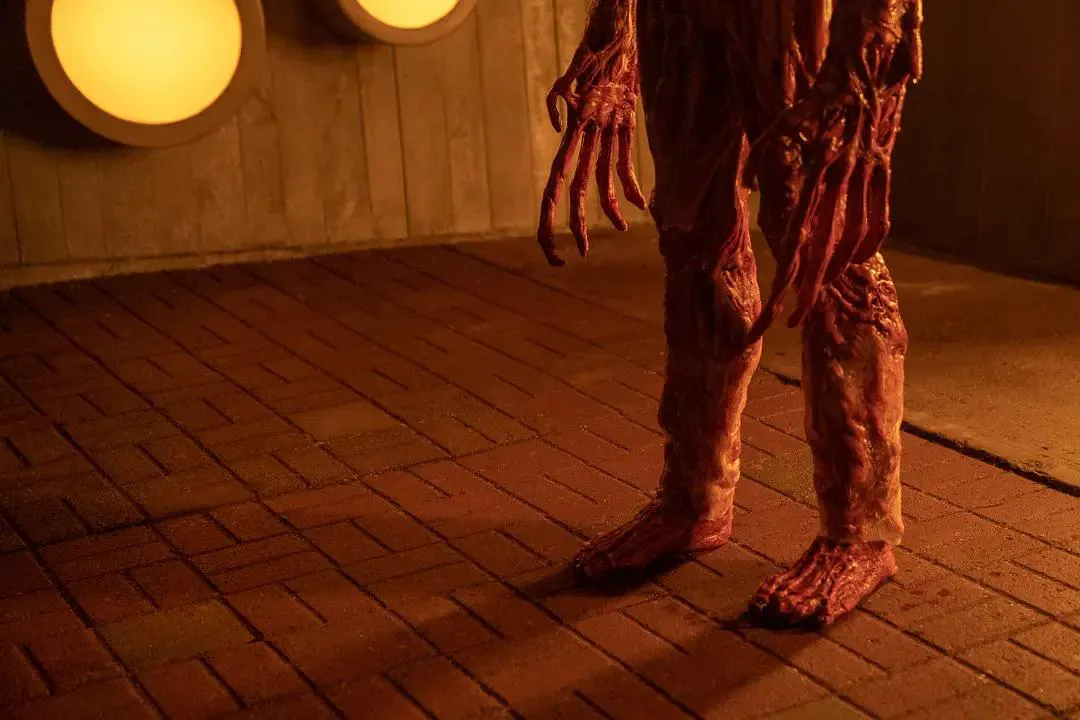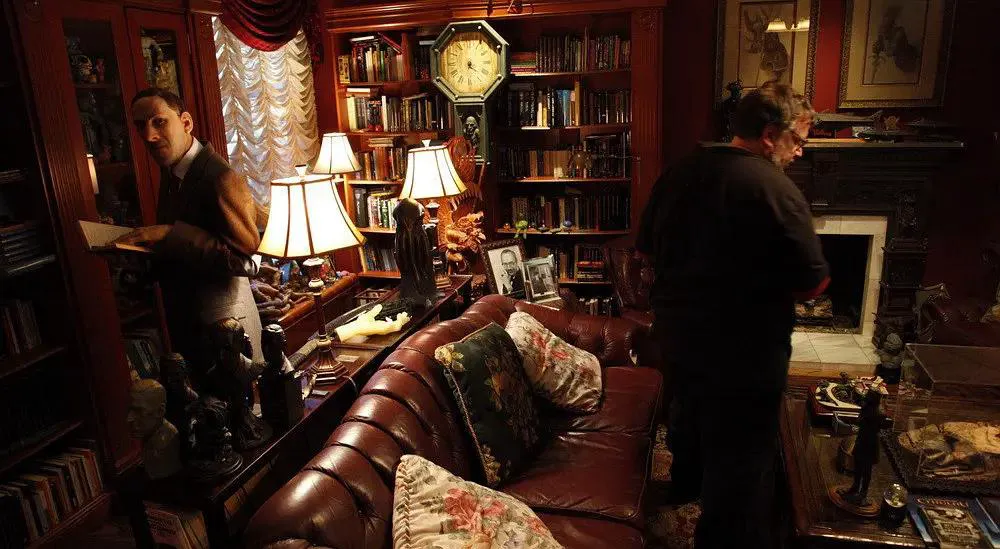Delving into the Macabre: An Introduction to “Guillermo del Toro’s Cabinet of Curiosities”
Were you captivated by the blend of suspense and fantasy in “Tales of the Tang Dynasty”? If so, you’re likely seeking a similar experience. Over the next few days, we’ll be dissecting the eerie and fantastical world of the Hollywood series, “Guillermo del Toro’s Cabinet of Curiosities.”
“Guillermo del Toro’s Cabinet of Curiosities” is a horror anthology series curated and co-written by Guillermo del Toro himself, produced by Netflix. Each episode presents a unique and chilling tale, spanning various subgenres of fantasy and horror.
Each episode clocks in at a substantial length, ranging from 45 minutes to an hour, making them almost movie-like in their scope. Therefore, each episode can be viewed as a stand-alone movie.

The eight stories, ranging from terrifying to magical, from gothic to bizarre and classic horror, are adapted by different directors from various sources. Del Toro also contributed two original stories.
Netflix’s deep pockets are well-known, and the investment in each episode is evident. While the special effects might not be overwhelmingly extravagant, they create an immersive experience that avoids the pitfalls of cheap CGI.

While each episode boasts its distinct style, they all share the common thread of being personally selected by del Toro. Compared to similar anthology series like “Inside No. 9” or “Black Mirror,” “Guillermo del Toro’s Cabinet of Curiosities” exudes a palpable Lovecraftian atmosphere.
Who is Guillermo del Toro?
If you’re unfamiliar with del Toro, let’s start with an introduction.

If Tim Burton is the master of gothic cinema and Denis Villeneuve excels at weaving intricate narratives in sci-fi, then Guillermo del Toro is undoubtedly the one who brings Lovecraftian horror and geek culture to the forefront.
Like Gabe Newell (G fat), the founder of Steam, del Toro understands his audience. He knows what they crave and what they want to see on screen.
Early Life and Influences
Born on October 9, 1964, in Guadalajara, Jalisco, Mexico, Guillermo del Toro’s upbringing was heavily influenced by his nanny, who filled his childhood with horror-themed bedtime stories.
At the age of four, del Toro reportedly insisted on sleeping in a coffin, alarming his Catholic family, who believed he was “a child favored by the devil” and performed an exorcism on Christmas.
This early exposure to the macabre fostered a fascination with the supernatural and the depths of hell, inadvertently leading him into the world of Lovecraftian horror.
Throughout his formative years, del Toro’s grandmother further fueled his interest in film, while he continued to explore various fantastical subcultures, including the works of H.P. Lovecraft and Japanese special effects films.
In his teens, he studied makeup and special effects under Dick Smith, a recipient of the Academy Honorary Award for his work on classics like “House of Dark Shadows,” “The Exorcist,” and “Midnight Cowboy.” Del Toro then began creating short films and founded his own studio in the 1980s.
Early Works: “Cronos” and “Mimic”
In 1993, del Toro wrote and directed his first feature film, “Cronos,” which was released in Mexico. The film tells the story of an alchemist who creates a device called “Cronos” to achieve immortality.
The device eventually falls into the hands of an antique shop owner, Gris, who inadvertently uses it and regains his youth. However, the price of immortality is high, as it requires him to consume human blood. A ruthless capitalist seeks to steal the device.
In the end, Gris destroys the “Cronos” and peacefully awaits the end of his life in the arms of his loved ones.
The film draws inspiration from W.W. Jacobs’ classic horror story, “The Monkey’s Paw,” exploring the theme of wishes granted with dire consequences.
“Cronos” was a critical and commercial success in Mexico, winning the Ariel Award for Best Film, as well as Best Director, Best Original Story, and Best Screenplay for del Toro.
Del Toro then set his sights on Hollywood. In 1997, he directed “Mimic,” which was released in North America. The film follows a team of scientists who create a species of insect to kill cockroaches carrying a deadly disease.
However, the insects mutate and begin to prey on humans, evolving into large, humanoid creatures that lurk in the shadows of the subway.
“Mimic” left a lasting impression on me, particularly the terrifying image of the giant, humanoid cockroach lurking in the dimly lit subway.
However, the film was not a major success, and del Toro returned to Mexico after experiencing creative differences with the studio. He then founded his own production company, Tequila Gang.
Breakthrough and Acclaim
Del Toro’s return to Hollywood came with “Blade II,” which grossed $155 million worldwide. However, the success of the film was not entirely attributed to del Toro, as the studio did not give him as much creative freedom as he would have liked.
His breakthrough came with “Hellboy” and “Pan’s Labyrinth,” the latter of which was nominated for Best Foreign Language Film and Best Original Screenplay at the 79th Academy Awards.
Del Toro then produced a number of successful films, including “The Orphanage,” “Splice,” “Rise of the Guardians,” and “Puss in Boots,” further expanding his creative experience.
He then brought us “Pacific Rim,” a film that can be called epoch-making in his life.
“Pacific Rim” was a true spectacle, showcasing the weight and scale of the mechs with stunning visual effects.
In 2017, del Toro’s fantasy drama “The Shape of Water” premiered at the Venice Film Festival, winning the Golden Lion for Best Film and the Academy Award for Best Picture.
With critical and commercial success, del Toro entered the ranks of Hollywood’s top directors, allowing him to pursue his creative vision without compromise.
“Guillermo del Toro’s Cabinet of Curiosities”: A Showcase of Emerging Talent
His collaboration with Netflix on “Guillermo del Toro’s Cabinet of Curiosities” is a clear indication of his desire to nurture emerging directors.
At the beginning of each episode, del Toro introduces the story, walking towards a cabinet filled with curiosities and selecting an object related to the episode.
Hopefully, del Toro’s series will pave the way for more niche fantasy and horror directors to find their voice and bring us more exceptional works.
That’s all for today’s introduction to “Guillermo del Toro’s Cabinet of Curiosities.” We’ve only scratched the surface, focusing on del Toro himself. We’ll delve into the individual episodes in the coming days.
Stay tuned for more!